Philosophou monastery
The monasteries of Mt Menalon
Philosophou monastery
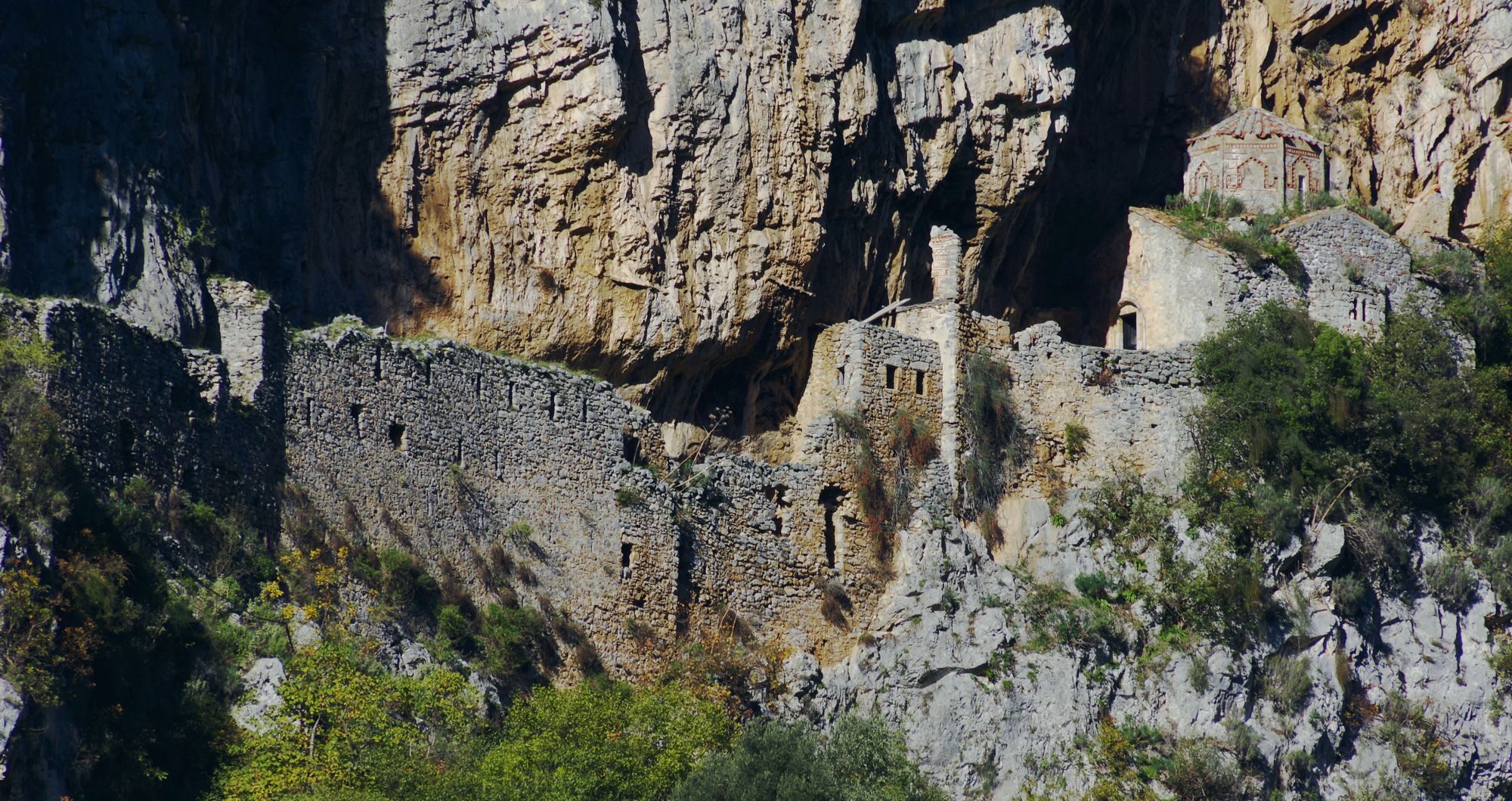
The Old Philosophou monastery
Click to enlarge
The Old Philosophou monastery
Philosophou monastery is the oldest monastery in Arcadia. These are two complexes, the old one, nestled under a narrow but safe rockshelter - like the Prodromos monastery, just on the opposite side of the ravine - and a newer one, built in a prominent position, on the shoulder of the western side of Lousios river.
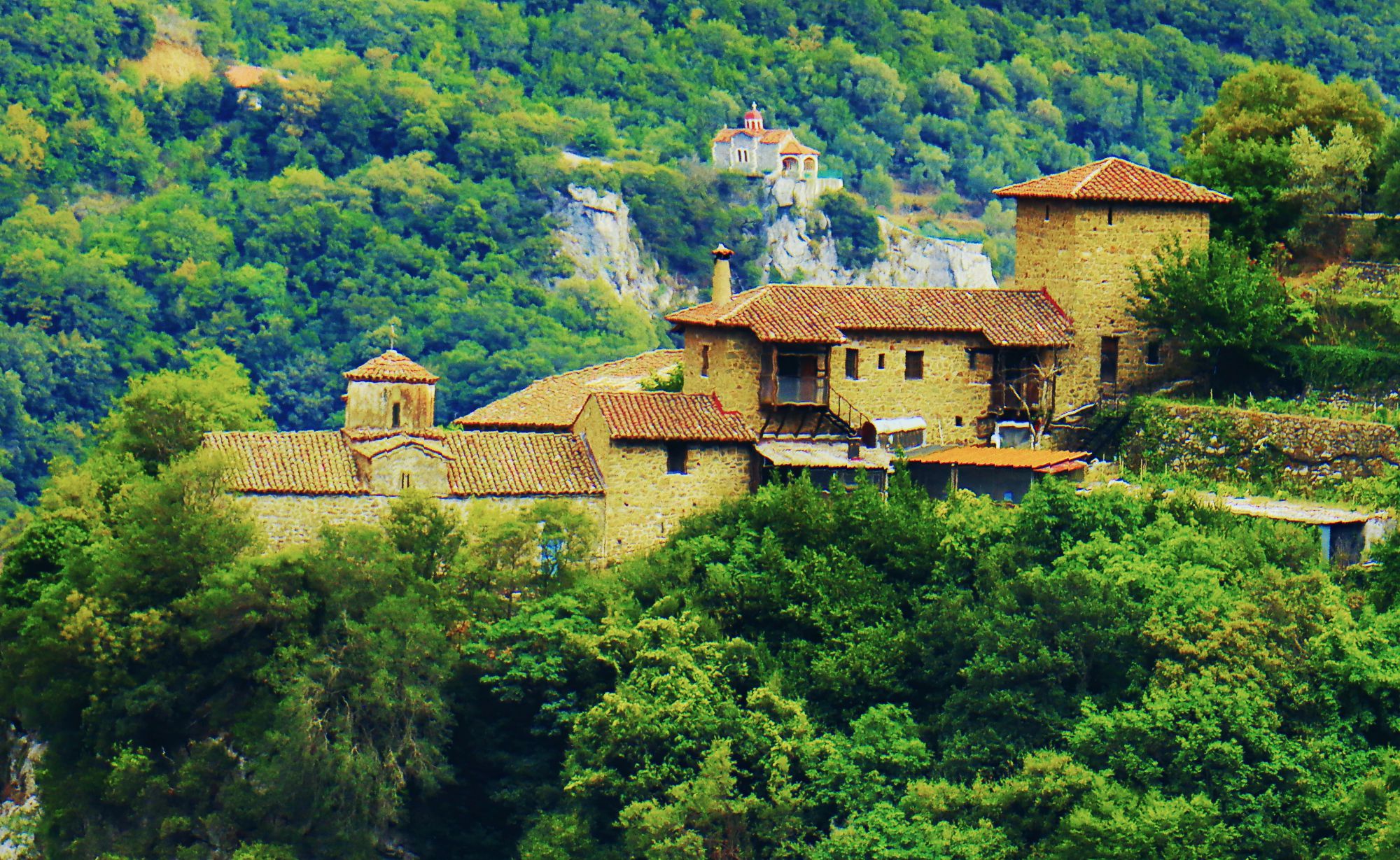
The New Philosophou monastery
Click to enlarge
The New Philosophou monastery
Τhe Old Filosofou monastery is one of the oldest byzantine monuments in Greece. It was built in 963 AD by Ioannis Lampardopoulos from Dimitsana, the so-called "Philosopher", serving as secretary to the emperor Nikiforos Fokas.
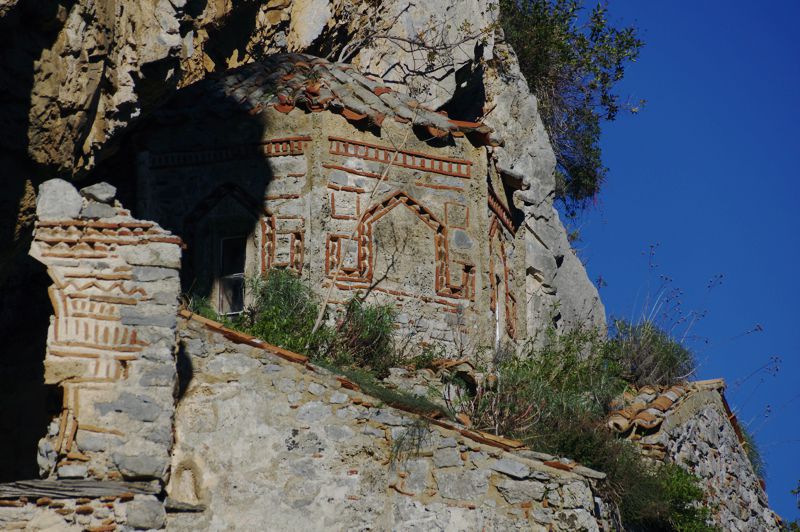
A detail from the katholikon of the Old Filosofou monastery
The old monastery nestled in a narrow (up to 8m wide) and elongated (about 130m long) natural cavity, which has been formed by disintegration and wind erosion in a low vertical rock, near the crown of the western side of the Lousios ravine. The naturally defensive position is additionally protected by a strong wall and the cavity is arranged into several levels, with the help of stone-built partitions. At the northernmost and highest point of the cavity, stands the katholikon, a small inscribed four-column church of the cruciform type with an eight-sided dome. Remains of dwellings and other buildings are preserved, as well as a cistern, which was fed by the drainage of the overhanging cavity.
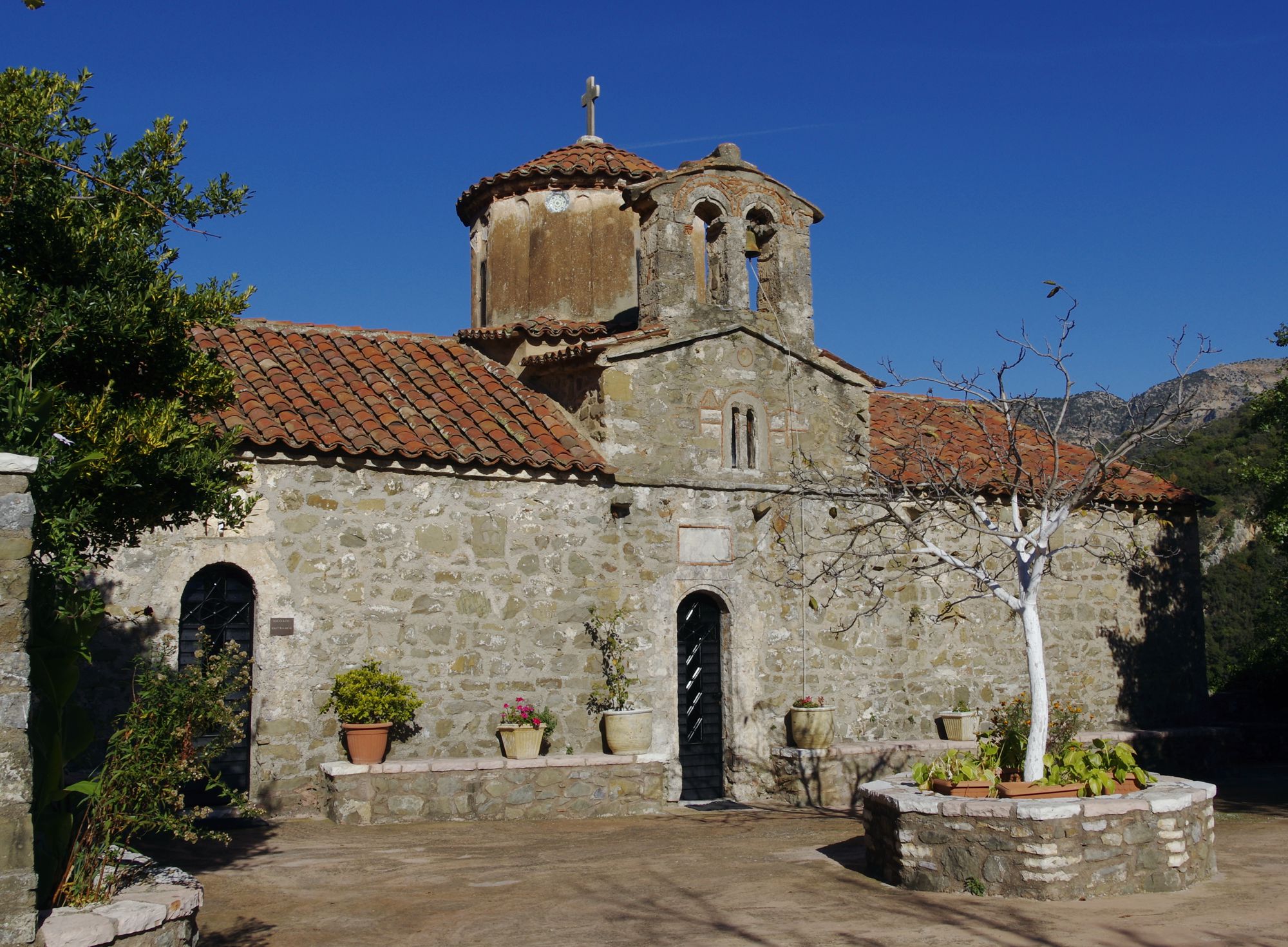
The katholikon of the New Philosophou monastery
Click to enlarge
The katholikon of the New Philosophou monastery
At the zenith of its intellectual activity and due to the narrowness of the space, in the middle of the 17th century, it was decided to transfer it to the new location, where a much larger complex could be built. The new katholicon, a large domed basilica, was built in 1661 and equipped with a wood-carved iconostasis bearing frescoes of Cretan style, works by the painter Viktor from 1663. The painting was completed in 1693 at the expense of "Mavraidi-pasha Farmaki" from Stemnitsa. At the end of the same century, the use of the old monastery had already faded.
Like Prodromos monastery, the Philosophou monastery was dissolved in 1834 to be re-established in 1838. The monastery maintained a library with important manuscripts from the 12th century, some of which are today kept in the National Library of Athens. The complex was completed and renovated several times during the 20th century and in 1955 it was classified as a preserved monument.
The monastery is supplied water by nearby springs. There is a fountain with drinking water in the courtyard. In the mansion, the monks offer cold water, coffee and sweets ("loukoumi"). The lower and upper gates are always open, as several hiking routes (see below) pass mandatorily through the monastery. Both the old and the new monastery honor the Dormition of the Virgin and celebrate the day of the Dormition (August 23).
Trails passing by Philosophou monastery
Both the old and the new Philosophou monastery are located on the main path of Lousios valley, used by several very interesting routes pass, such as Menalon Trail, το O32 National Trail and the long trail Red Trail SAOO designed, marked and maintained by the Club of Arcadian Mountaineers and Ecologists.
All trails can be accessed through the page menu system.
Text and photos by T. Adamakopoulos

topoguide Greece
A guide to Mt Menalon
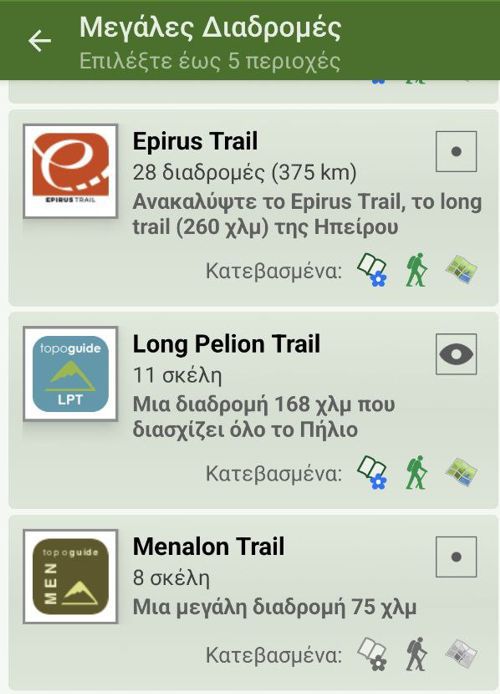
Mt Menalon topoguide is available for Android devices as one of the dozens of available region of Greece via the topoguide Greece application. Mt Menalon is a member of the Peloponnese group. Get the Mt Menalon guide as an in-app purchase through the app.
Mt Menalon topoguide is also available for iOS (iPhone & iPad) devices via the application Topoguide Greece. Get the Mt Menalon guide as an in-app purchase through the app, found in the Peloponnese group.
topoguide Greece offers active navigation along the trails, as well as a comprehensive guide to the geography, the nature and the culture of the area.

